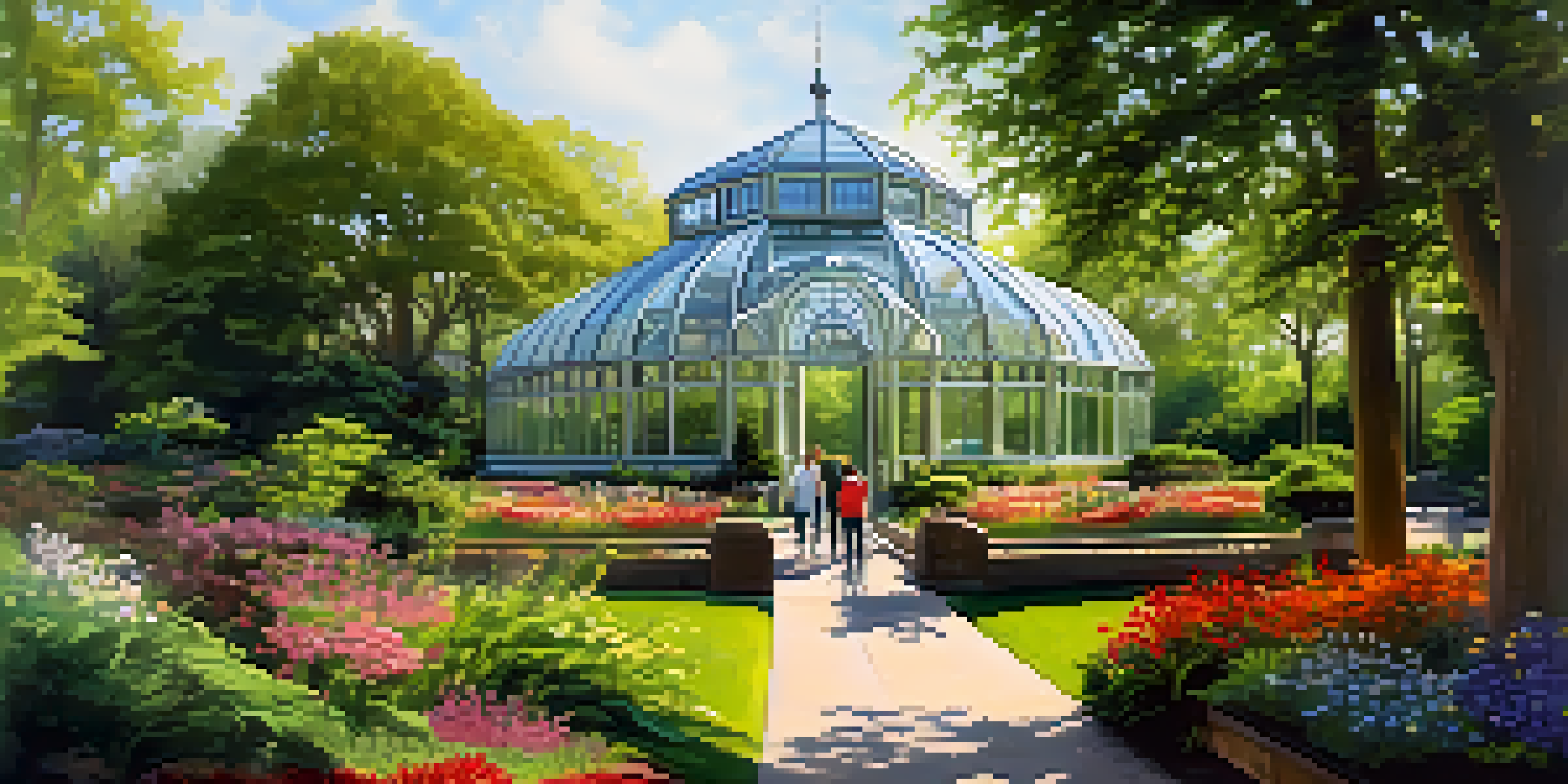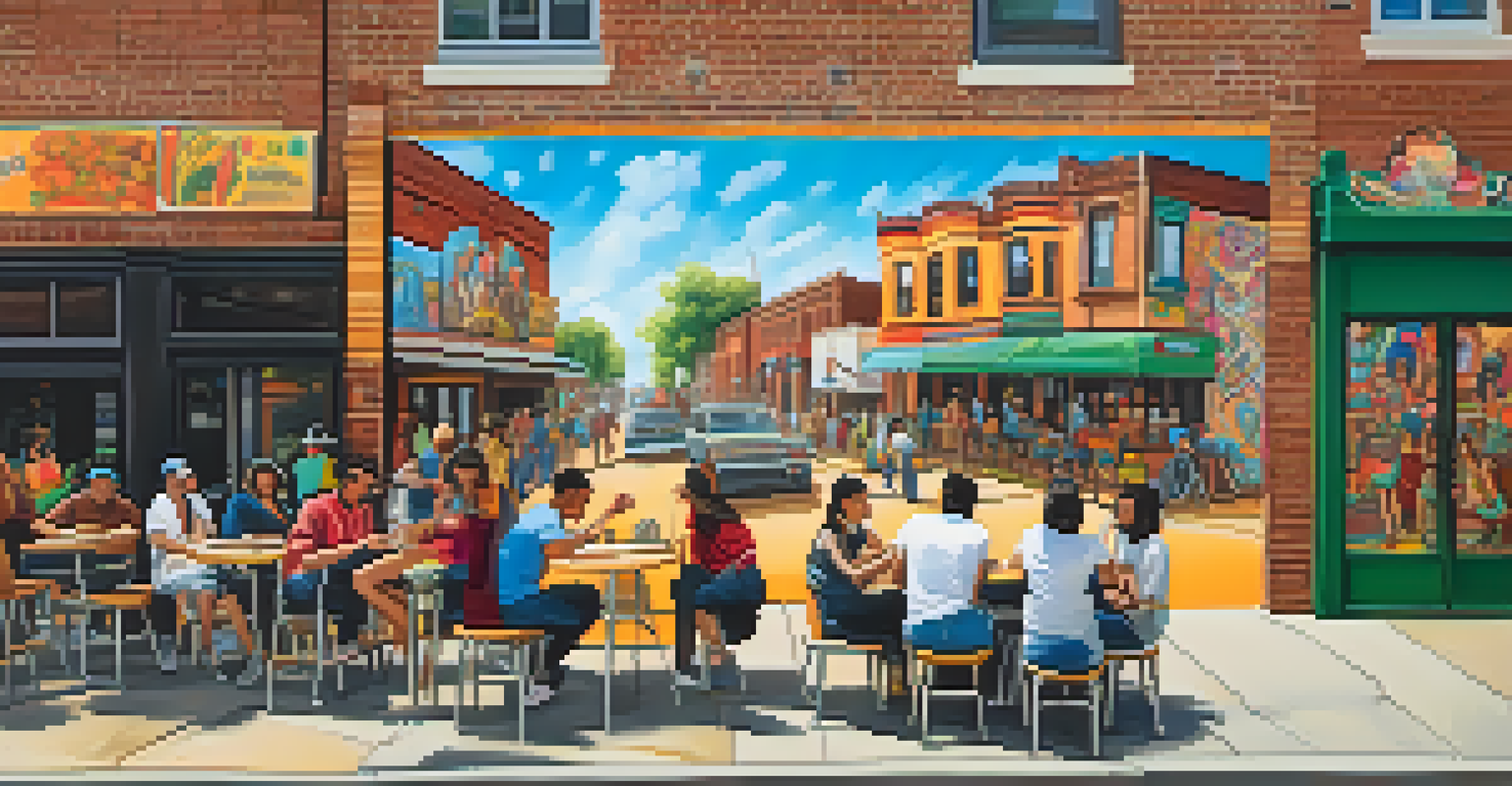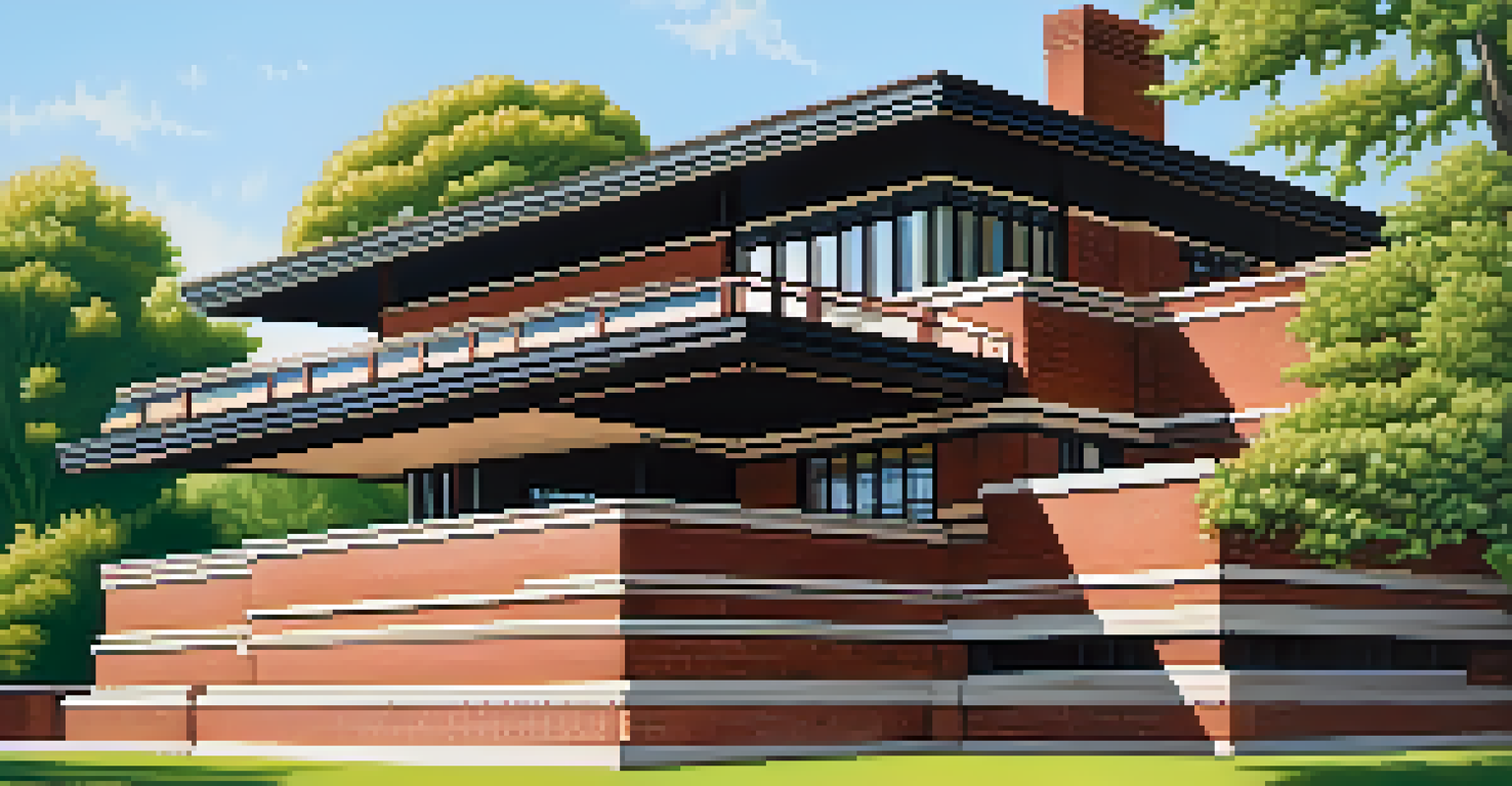A Walk Through Time: Exploring Chicago's Historic Neighborhoods

The Heartbeat of Chicago: An Introduction to Neighborhoods
Chicago is a city that breathes history, with each neighborhood telling its own unique story. From the bustling streets of Lincoln Park to the vibrant murals of Pilsen, these areas offer a glimpse into the past that shaped the city. As you stroll through these historic neighborhoods, you’ll not only see stunning architecture but also feel the cultural pulse that defines Chicago.
Chicago is not just a city, it's a character with a unique story in every neighborhood.
Every corner holds a piece of history, and understanding these neighborhoods means appreciating the city’s diverse heritage. For instance, the influence of immigrants can be seen in the cuisine, festivals, and local businesses that thrive in these areas. This blend of cultures has created a rich tapestry that continues to evolve while honoring its roots.
So, lace up your walking shoes as we embark on a journey through time, exploring the stories and landmarks that make Chicago's neighborhoods so special. Each stop along the way reveals a chapter of the city's history that invites us to reflect on how far we've come.
Lincoln Park: Nature Meets History
Lincoln Park is not just a beautiful green space but also a neighborhood steeped in history. Originally known as the City Cemetery, this area transformed into a vibrant park in the 1800s, serving as a testament to Chicago's resilience. Today, the park is a sanctuary for nature lovers and a hub for cultural events, all while keeping its historical significance alive.

As you wander through the park, you can’t miss the stunning Lincoln Park Conservatory, which houses a diverse collection of plants and flowers. This Victorian greenhouse, built in the 1890s, reflects the architectural style of the era and offers a peaceful escape from the city’s hustle and bustle. It’s a perfect spot for a leisurely stroll or a quiet moment of reflection.
Chicago's Neighborhoods Tell Stories
Each neighborhood in Chicago showcases a unique blend of history, culture, and community identity.
Moreover, the nearby Lincoln Park Zoo, one of the oldest zoos in the country, enhances the area’s appeal while also promoting wildlife conservation. Together, these attractions offer a glimpse into Chicago’s dedication to preserving both its natural beauty and its historical landmarks.
Pilsen: A Cultural Canvas of Art and Heritage
Pilsen is a neighborhood that bursts with color and creativity, making it a must-visit for art enthusiasts. Known for its vibrant murals and street art, Pilsen serves as a canvas reflecting the community’s rich Mexican heritage. Each mural tells a story, capturing the struggles and triumphs of the residents who have called this area home.
The city is a living tapestry that reflects its history, culture, and the vibrant lives of its people.
One highlight in Pilsen is the National Museum of Mexican Art, which showcases an impressive collection of Mexican art and culture. This museum not only celebrates the artistic talents of the community but also provides educational programs that foster appreciation for Mexican heritage. It’s a place where history and creativity intertwine beautifully.
As you explore the neighborhood, don’t miss the chance to indulge in authentic Mexican cuisine at local eateries. From tacos to tamales, the flavors of Pilsen offer a delicious representation of its cultural roots, making your visit both a feast for the eyes and the palate.
Hyde Park: Home of Innovation and Legacy
Hyde Park is perhaps best known as the home of the University of Chicago, a place that has been a beacon of innovation since its founding in 1890. This neighborhood is rich with academic history, producing numerous Nobel laureates and influential thinkers. Walking through Hyde Park, you can’t help but feel the intellectual energy that permeates the air.
The architecture here also tells a story, with styles ranging from Gothic to modern. The iconic Robie House, designed by Frank Lloyd Wright, is a highlight that showcases the Prairie School movement. Its unique design not only stands as a work of art but also as a symbol of Chicago’s architectural heritage.
Diverse Cultural Experiences Abound
From the vibrant murals of Pilsen to the culinary delights of Chinatown, Chicago's neighborhoods offer rich cultural experiences.
Moreover, Hyde Park offers a range of cultural experiences, including the Hyde Park Art Center and various community festivals. This blend of education, innovation, and artistic expression makes Hyde Park a dynamic neighborhood that honors its past while embracing the future.
Wicker Park: A Blend of Bohemian Charm and Modern Vibes
Wicker Park has transformed from its industrial roots to a trendy neighborhood that attracts creatives and young professionals alike. Once a hotspot for artists and musicians in the late 20th century, Wicker Park now buzzes with chic boutiques, coffee shops, and lively music venues. This area embodies a perfect blend of historical charm and modern energy.
One of the standout features of Wicker Park is its namesake park that serves as a community gathering spot. The park offers a mix of recreational activities, from picnicking to outdoor concerts, fostering a sense of community among residents. It’s a place where history and contemporary life coexist harmoniously.
As you explore, take the time to appreciate the beautifully preserved Victorian-era homes that line the streets. These architectural gems tell a story of the neighborhood’s past while contributing to its unique character. Wicker Park is a reminder that even as the city evolves, it retains the essence of its history.
Chinatown: A Journey to the East in the Heart of Chicago
Chinatown offers a vibrant taste of Asian culture right in the heart of Chicago. Established in the late 1800s, this neighborhood has grown into a bustling hub of restaurants, shops, and cultural landmarks. As you walk through the iconic dragon gate, you’ll feel as though you’ve been transported to another world, rich with history and tradition.
The streets of Chinatown are lined with enticing aromas from authentic eateries serving everything from dim sum to Peking duck. These culinary delights reflect the deep-rooted traditions of the Chinese community in Chicago, making it a foodie’s paradise. Don’t forget to stop by the Chinatown Square, where you can shop for unique gifts and indulge in cultural experiences.
Historic Landmarks Reflect Evolution
The mix of historic landmarks and modern attractions in areas like The Loop highlights Chicago's architectural and economic evolution.
Additionally, Chinatown hosts several festivals throughout the year, celebrating the Lunar New Year and other significant cultural events. These festivities not only highlight the neighborhood's heritage but also invite people from all walks of life to come together and celebrate diversity. In Chinatown, the past and present beautifully intertwine, creating a vibrant community.
The Loop: Chicago’s Historic Heartbeat
The Loop serves as the bustling downtown of Chicago, where history meets modernity. This area is home to iconic skyscrapers, historic landmarks, and the famous Chicago Riverwalk. The juxtaposition of contemporary architecture alongside buildings dating back to the 19th century showcases the city’s evolution over time.
One cannot visit The Loop without exploring the Chicago Board of Trade, a historic symbol of the city’s financial prowess. Its impressive Art Deco architecture stands out against the skyline and serves as a reminder of Chicago's significant role in the trading industry. The Loop is a place where business meets history, making it a vibrant economic center.

Walking through The Loop, you’ll encounter stunning public art installations and theaters that contribute to the city’s cultural scene. From the iconic Cloud Gate sculpture in Millennium Park to the historic Chicago Theatre, this area offers a wealth of artistic experiences. The Loop encapsulates the essence of Chicago, where the past continually shapes the future.
Conclusion: The Stories Within Chicago's Neighborhoods
As we wrap up our journey through Chicago's historic neighborhoods, it's clear that each area offers a unique narrative that contributes to the city's identity. From the artistic expressions in Pilsen to the academic atmosphere of Hyde Park, every neighborhood pulses with stories waiting to be discovered. These areas not only reflect the history of Chicago but also the resilience and spirit of its residents.
Exploring these neighborhoods allows us to appreciate the rich cultural heritage that continues to thrive today. It's a reminder that history is not just something to be read about; it's lived and experienced in our everyday lives. Each street, building, and mural invites us to connect with the city's past while forging our own memories.
So, whether you’re a lifelong resident or just visiting, take the time to explore these historic neighborhoods. Engage with the stories, savor the flavors, and embrace the vibrant culture that makes Chicago a truly remarkable place to call home.